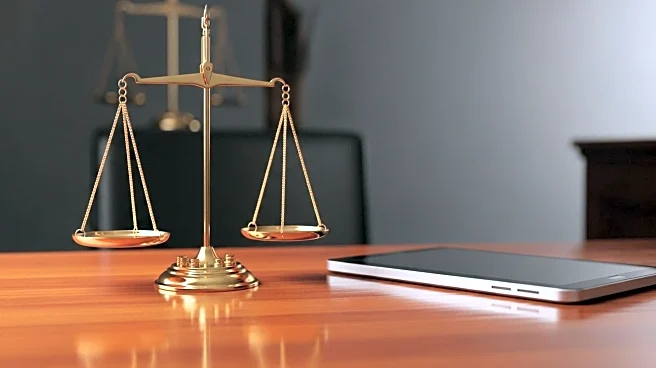What's Happening?
The Supreme Court of India has formed a committee chaired by former judge Justice Sudhanshu Dhulia to address disputes regarding the boundaries of mining lease areas and reserved forest land in Andhra Pradesh. This decision follows allegations against Obulapuram Mining Company Private Limited and others concerning illegal mining and encroachments. The committee, which includes members from various governmental departments, is tasked with submitting a comprehensive report within three months. The court's decision came despite objections from the respondents, who argued that the scope of the investigation was being expanded beyond initial agreements. The bench, led by Chief Justice of India B R Gavai, emphasized that the committee would ensure all parties are heard during the investigation.
Why It's Important?
This development is significant as it addresses ongoing concerns about illegal mining and environmental degradation in Andhra Pradesh. The formation of the committee reflects the judiciary's proactive approach to resolving complex disputes involving natural resources and environmental protection. The investigation could lead to stricter enforcement of mining regulations and better protection of forest areas, impacting the local economy and environment. Stakeholders such as the state government, mining companies, and environmental groups are likely to be affected by the committee's findings and recommendations.
What's Next?
The committee is expected to conduct a thorough investigation and submit its report within three months. The findings could lead to legal actions or policy changes aimed at curbing illegal mining activities. The court has indicated that it will consider the respondents' objections regarding the scope of the investigation at a later stage, potentially influencing future legal proceedings. Stakeholders, including the state government and mining companies, will be closely monitoring the committee's progress and preparing for possible outcomes.
Beyond the Headlines
The establishment of this committee highlights broader issues of governance and environmental stewardship in India. It underscores the challenges of balancing economic development with environmental conservation, particularly in resource-rich regions. The case may set a precedent for how similar disputes are handled in the future, influencing policy and legal frameworks related to mining and land use.










